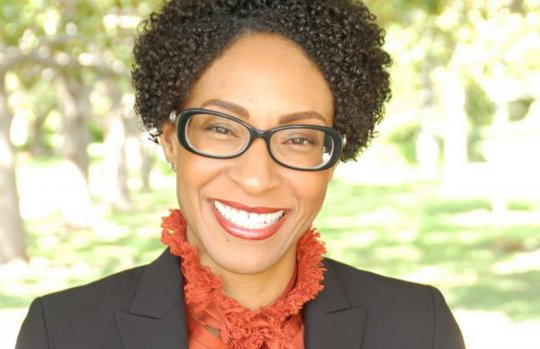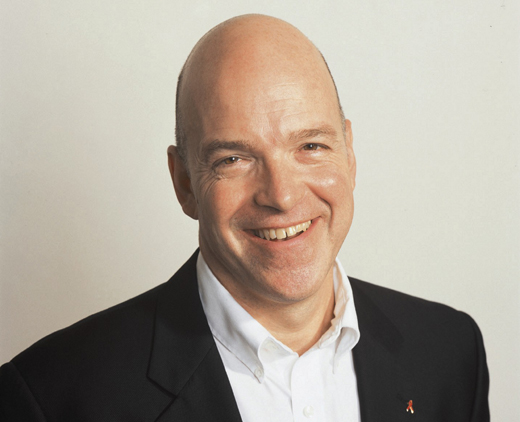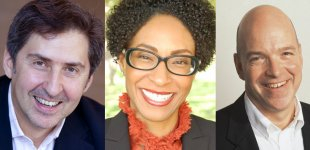To kick off the 60th Anniversary National Conference, we have asked each of our keynote speakers an introductory question that relates to their area of expertise and arts education. Our keynote speakers are Ayanna Hudson, Arts Education Director, National Endowment for the Arts; Richard Kessler, Dean, Mannes College, The New School of Music; and Ben Cameron, Program Director for the Arts at the Doris Duke Charitable Foundation in New York. Check out their responses below.
They will give their keynote speeches on Thursday, April 25 at 10 am. If you have a burning question for one of them, tweet the question with this hashtag: #yaconference and remember to include the speaker's initials. We will do our best to accommodate as many questions as time permits. Learn more about each keynote speaker.

Keynote speaker Richard Kessler
Young Audiences Arts for Learning: As the Dean of Mannes College The New School for Music, what role does higher education play in supporting and sustaining your work throughout the field of arts education?
Richard Kessler: Well, let me start off by saying that the divide between K-12 and higher education is something that I have struggled with a bit since becoming the dean at Mannes. First off, K-12 is much more involved in pursuing excellence in teaching and learning, whereas higher ed seems to be more focused on teaching. Naturally, this is a generalization, but it's not so general that I feel uncomfortable in mentioning it. Secondly, higher ed tends to view K-12 as something that is separate or disconnected rather than being highly relevant to and ultimately part of a more dynamic educational spectrum than people realize. Is there really that much of a difference between a senior in high school and a college freshman? Think about all the areas of remediation that colleges are now forced to undertake that are so clearly connected to K-12 learning. Shouldn't all artists be knowledgeable and concerned about policy and what they can do to advocate for the rights of children and how to better support the role of arts in society? Those are but a few little tweeks at of what is much larger and profound topic.
So, I guess you've figured out by now that I believe higher education has a major role in K-12 arts education, in particular. I have come to the conclusion that today's artists should be trained as both an artist and educator, and that new core practice for artists includes proficiencies in K-12 teaching artistry and community engagement. With higher education training many of our artists and all of our arts teachers, we have to rethink curricula, activities, and values in order to adequately prepare today's artists for the sorts of work they will encounter, which more and more includes working with young students, communities, and engaging people through the arts in new ways.
Picasso once said "paintings are but research and experiment." (A whole nother topic I would love to talk about and am working hard to bring into the Mannes curriculum!) I think about that quote often, particularly in terms of the arts as education and the role of the artists to educate through a variety of means appropriate to their skills, inclination, and the needs of society. I would like to think that the training of artists can be tilted heavily towards both Picasso's idea and what we need from artists in terms of arts and education.

Keynote speaker Ayanna Hudson
Young Audiences Arts for Learning: In your new role as the Director of Arts Education at the NEA, you will be serving as the spokesperson for arts education at the federal level. What is one of the critical Arts Education issues in this country that you would like to see addressed?
Ayanna Hudson: At the NEA, we are working toward a country in which every student is engaged and empowered through an excellent arts education. As we all know, that is not currently the case—arts education in this country varies widely state by state, school by school and community by community. We don't have a clear picture of which students are receiving arts education, how much, how often, and from whom.
As part of the NEA's new strategy for arts education, our first step is to better understand and map arts education in this country. The states are already collecting data about education and we will help them to interrogate and analyze this data to better understand what arts education looks like in their state.
That fuller picture will help states to make informed decisions about how to steer resources based not on assumptions or anecdotes, but based on facts. Furthermore, it will also be an integral part of supporting the NEA's goal of weaving arts education into the fabric of schools, of school districts, and of communities across the country.
By having a shared understanding of the current state of arts education, we can all come together with a common agenda, both at the local and state levels as well as at the national level. We are not talking about mere partnerships here. We are talking about multiple entities aligning their resources toward a common agenda. We believe this is the first step in bringing all of us together and has the potential to be transformational for arts education.

Keynote speaker Ben Cameron
Young Audiences Arts for Learning: If you have one piece advice for an arts organization applying for a grant, what would it be?
Ben Cameron: If there were a single piece of advice, I would urge organizations to simply do their homework first. We receive many applications from groups that fall outside of our priorities and disciplines, or that make claims about other funder commitments that simple homework would reveal to be unrealistic. I always feel badly that they have wasted their time to submit materials for projects which by definition we cannot fund or that their desire to receive support without a realistic sense of other potential funding dooms their requests . And as a back-up, speak the truth as you know it to be for you, without speaking for others. Many applications fall by inflated claims, inaccurate statements about the larger field, or by inappropriate judgments passed on others, frankly: the best applications are open without being hyperbolic.


